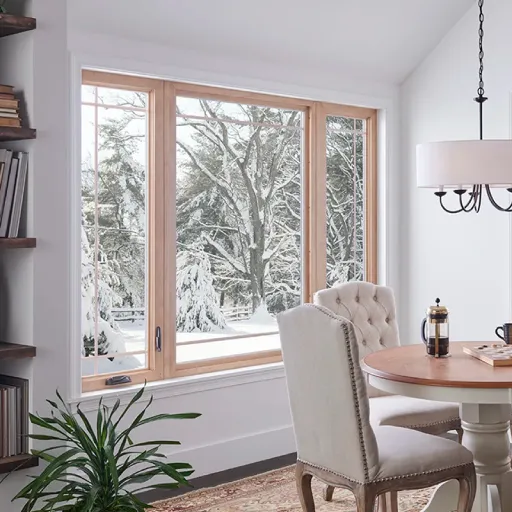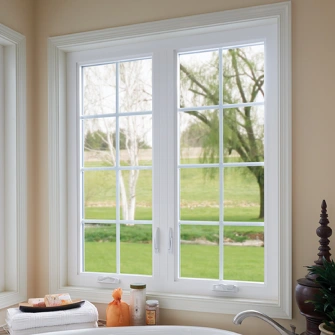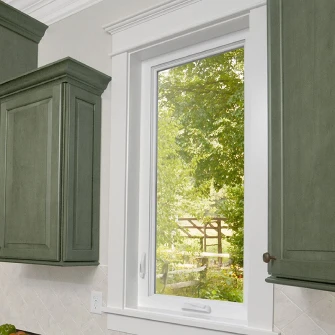Best choose
What Are Casement Windows?
A casement window is a window style hinged at the side, opening outward like a door when you turn the crank handle. This mechanism allows the sash (the part of the window that holds the glass) to swing open wide, inviting in ample fresh air and natural light. Their popularity stems from their sleek design, tight seal, and unobstructed views, making casement windows a versatile solution for spaces ranging from cozy cottages to sprawling contemporary residences.

Side Hinges
The sash is attached to the frame via hinges on either the left or right side. A single window unit can also include multiple casement panels.
Enhanced Ventilation
When fully open, the sash catches side breezes, directing fresh air into the room.
Unobstructed View
Casement windows often have minimal frame in the glass area, making them an excellent choice if you want to showcase outdoor scenery.
Top Benefits of Casement Windows
- Superior Airflow
Since the window sash swings outward, it captures breezes and channels cool air inside. This design is particularly beneficial for homes in warmer regions or areas where you want to take full advantage of cross-ventilation. - Energy Efficiency
Casement windows close tightly against the frame. When you turn the crank to lock them, the sash is pulled firmly against the weather stripping, creating a strong seal. This reduces the likelihood of air leaks and can help lower your heating and cooling bills. - Versatile Design
Although casement windows are often associated with contemporary architecture, they also integrate seamlessly with traditional and craftsman-style homes. With the right frame material and grille pattern, casement windows can adapt to almost any aesthetic. - Security
Because the window locks directly into the frame, casement windows can be more secure than some other styles. Many models come with multi-point locking systems, offering added peace of mind.



Frequently Asked Questions (FAQ)
Are casement windows more energy-efficient than other styles?
Casement windows can be very energy-efficient because their sash presses firmly against the frame when closed. High-quality materials and proper installation further boost insulation.
Can casement windows withstand high winds or extreme weather?
Yes, especially if you choose robust frame materials like fiberglass or premium vinyl. Look for windows rated for your local wind zone, and make sure to close them in severe weather to avoid damage.
Do casement windows open inward or outward?
Most casement windows in the U.S. open outward, with hinges on the side and a crank handle for operation. Inward-opening casement windows exist but are less common in American residential construction.
Can I install casement windows in high-humidity areas like a bathroom?
Absolutely. Choose moisture-resistant materials, such as vinyl or fiberglass. Proper ventilation is beneficial in humid zones, making casement windows a smart choice for bathrooms and kitchens.
How do I clean the exterior of the window if it swings out?
Depending on your home’s layout and window height, you may clean the exterior from outside or potentially from inside if you can reach the glass. Some casement windows open wide enough to let you lean out safely to access the outer glass. For higher floors, professional cleaning may be safest.
Is professional installation necessary, or can I DIY?
While experienced DIY enthusiasts can install windows, professional installation is recommended to ensure a correct fit, proper sealing, and compliance with local building codes. Improper installation can lead to air leaks, water infiltration, or operational issues.
What if the crank mechanism breaks or becomes hard to turn?
Replacing or repairing the operator assembly and lubricating hinges can often resolve the problem. Consult the manufacturer’s instructions or hire a professional if repairs are extensive.


